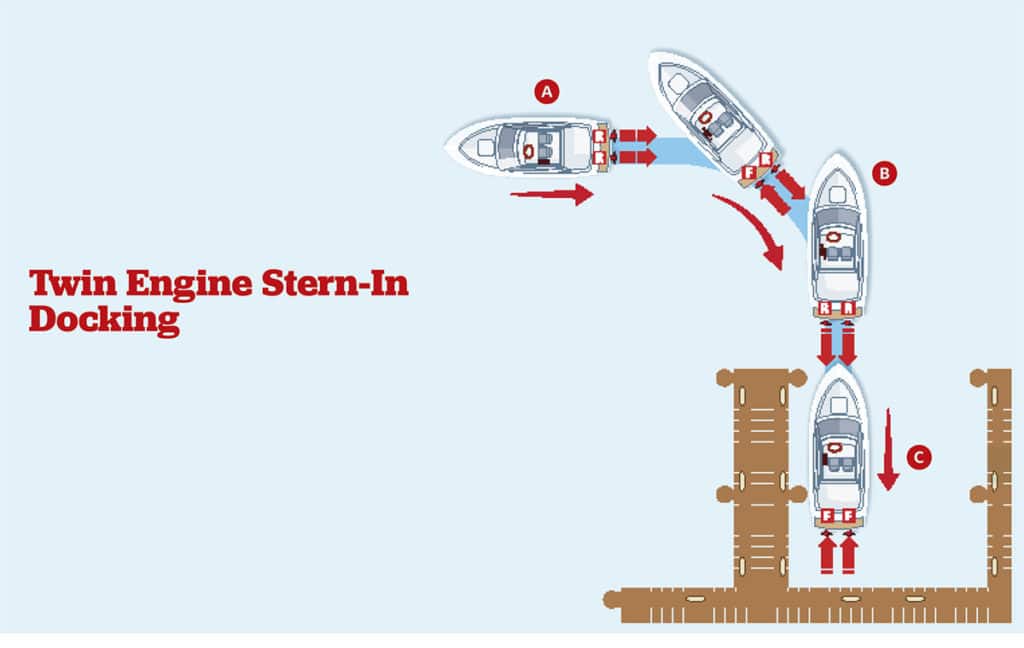
One of the most common docking scenarios for larger, dual-inboard boats is the classic stern-to docking arrangement — better known as backing into a slip. It separates the men from the boys, but with a little prior planning, it turns out to be a fairly straightforward (or backward) easy move.
Dual inboards or stern-drives offer boaters a great deal of control. By utilizing counterthrust (forward on one engine and reverse on the other), boaters can literally spin their boat 360 degrees in a little more than a boat length. The rudders or lower units (in the case of stern-drives or articulating drives like Volvo’s IPS) should always be amidships. The process works with dual outboards, though pivot maneuvers are more problematic due to their narrow set.
A. When nearing your slip, try to plan your approach so that wind and current will work with you, bringing the boat to the dock. Pull a little past your slip and then begin backing with both engines (always with your rudder amidships).
B. As you near the point that you need to pivot, pull the starboard engine in reverse and slide the port engine into forward.
C. As you move parallel to the slip, enter with both engines in reverse, adjusting position by countering thrust and bumping the engines in and out of gear when needed. When ready to tie up, put both engines in forward to arrest the movement and bring the boat to dock.









